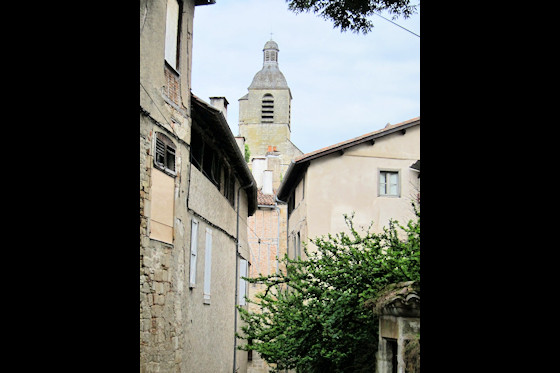Figeac, stage stop on the Camino de Santiago
Figeac is situated on the right bank of the river Célé, a tributary of the Lot.
The town has always been an important stop for pilgrims on the Camino de Santiago pilgrimage route. The picturesque old town is dotted with stately medieval houses and offers the photographer a wide range of motifs.
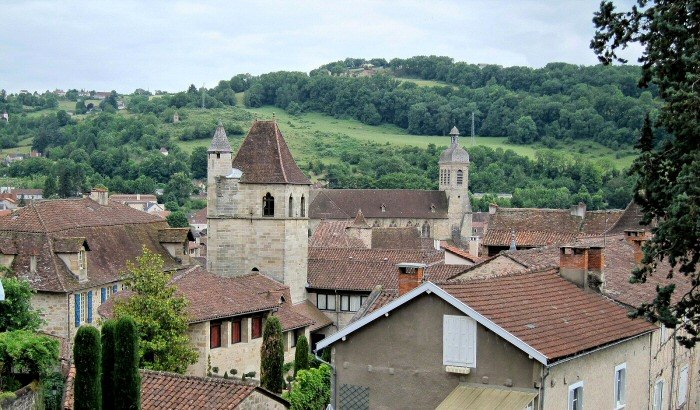
Maison de la Monnaie with Tourist Office
Move the mouse over the picture and you will see the house from backwards!
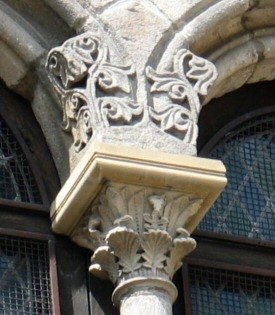
Detail: Window-column capital
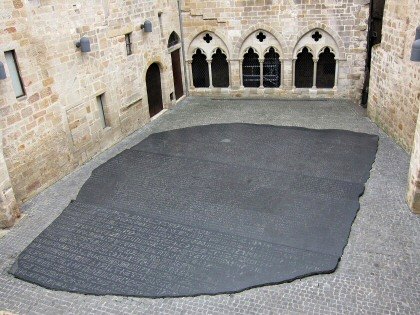
This is the Place des Écritures, whose floor is covered with a work by the artist Joseph Kossuth in black African granite. It is a huge image of the Rosette stone.
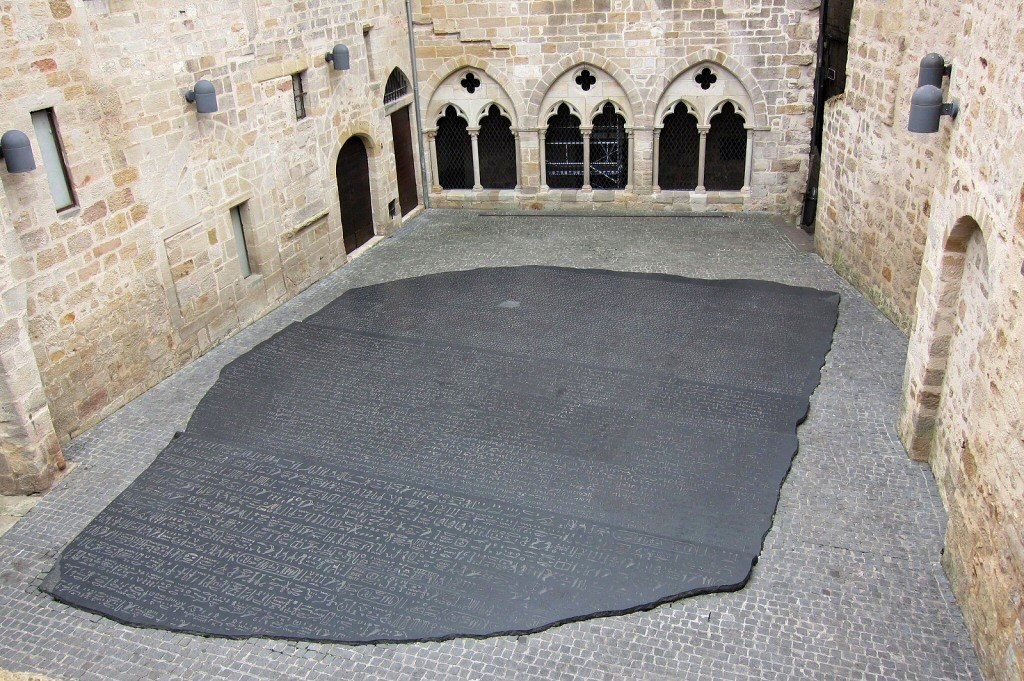
![]() Enlarge browser window and click on the small picture!
Enlarge browser window and click on the small picture!

Jacques-Joseph Champollion
He was an archiologist and was born in Figeac. In 1822, he succeeded in deciphering the hieroglyphics by means of the Rosetta Stone.
Vreni on Place Champollion
View from Place Carnot (market place) to Place Champollion.
Here at Place Carnot, under the roof of the market hall, we treat ourselves to a stage beer.
From the higher situated church Notre Dame du Puy one has a beautiful view over the city.
The church of Saint-Sauveur belonged to the former abbey and was consecrated in 1092 during the reign of Abbot Hugo of Cluny. Despite the destruction during the Hundred Years' War and the Wars of Religion, the church has largely retained its basic Romanesque structure.
Window in a side chapel of the Église Saint Sauveur
The old town has essentially retained its medieval character. There are still many houses from the 13th to 16th century. The typical architectural style consists of three-storey buildings with arcades on the ground floor, behind which there are mostly shops. On the first floor were the living quarters, and the open attic was used for storage or stacking. Gothic window shapes and a gallery are often found on the living level. On the facades you often find playful oriels and richly decorated doors.
Figeac has always been an important stop on the way to Santiago. The Hôpital Saint-Jacques is characteristic of this. It was already used in the 13th century to supply and care for the pilgrims on the Via Podiensis. However, the oldest surviving structures date from the 18th century, when it was converted into a general hospital.




